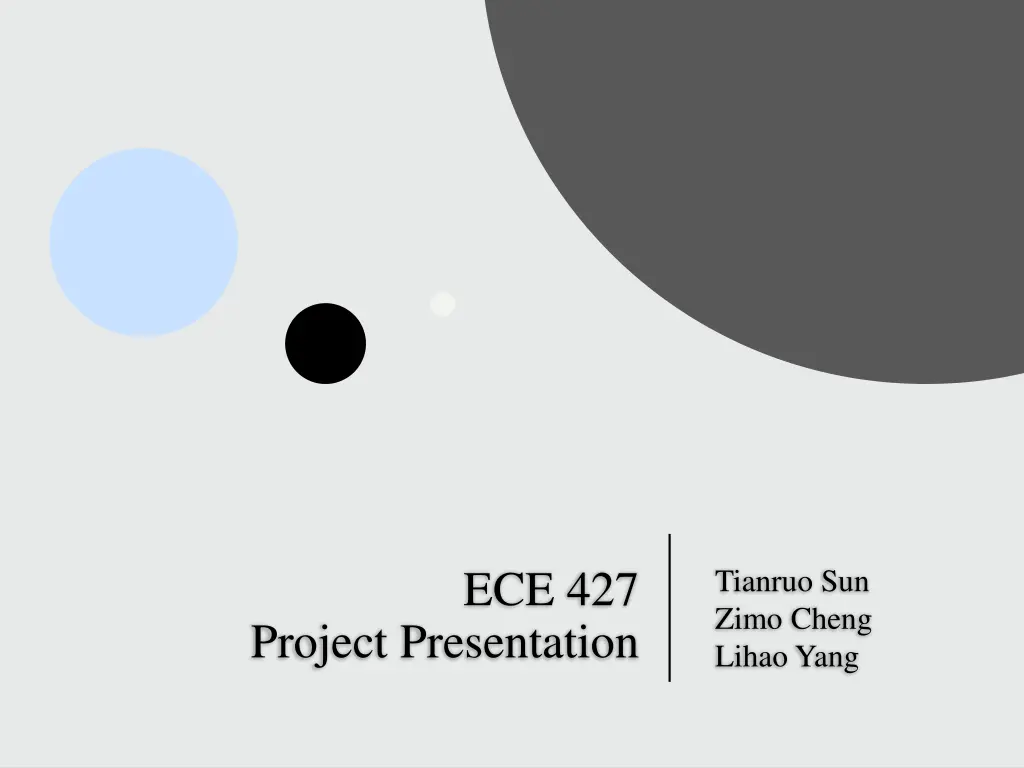
Advanced Audio Watermarking Techniques
Learn about the innovative methods and requirements of audio watermarking, including inaudibility, robustness, and capacity. Explore the intriguing world of embedding data within audio signals while maintaining quality and security.
Download Presentation

Please find below an Image/Link to download the presentation.
The content on the website is provided AS IS for your information and personal use only. It may not be sold, licensed, or shared on other websites without obtaining consent from the author. If you encounter any issues during the download, it is possible that the publisher has removed the file from their server.
You are allowed to download the files provided on this website for personal or commercial use, subject to the condition that they are used lawfully. All files are the property of their respective owners.
The content on the website is provided AS IS for your information and personal use only. It may not be sold, licensed, or shared on other websites without obtaining consent from the author.
E N D
Presentation Transcript
ECE 427 Tianruo Sun Zimo Cheng Lihao Yang Project Presentation
Project Description Watermarking is a technique for embedding additional data along with audio signal so that it will not effect its perceptual quality of an audio signal. Host signal: audio Watermark: data sequence
Requirements of watermarking Inaudibility. The signal to noise ratio of the watermarked signal to the original signal should be maintained greater than 20 dB. Also, we should make sure that the modified signal not perceivable by human ear. [1] Robustness. Watermark should be robust against common signal processing attacks such as lossy compression, linear filtering, resampling, etc. [1] Capacity. The efficient watermarking technique should be able to carry more information but should not degrade the quality of the audio signal. [1] Robustness Capacity Inaudibility
MP3 Specification MP3 (formally MPEG-1 Audio Layer III or MPEG-2 Audio Layer III) is a compressed coding format for audio signal. Validation for robustness (compressed).
MP3 basic techniques compressed domain Embed watermarks to PCM-data operate with all audio formats (not sure to survive the coding/decoding procedure, time consuming) Sanford et al. and MP3Stego Auxiliary information is embedded as a watermark into the host signal by a lossy compression technique MP3Stego hides information in MP3 files during the compression process (compress, encrypted, and then hidden in the MP3 bit stream) Use or not of the original signal for watermark detection Not to use the original signal because it results in storage waste and adds danger of its usage by malicious users. Not immunized against inversion attacks by third parties. [2]
Different algorithms for watermarking Time domain algorithms: Least Significant Bit Coding Echo Hiding Frequency domain algorithms: Phase coding Spread spectrum
Least Significant Bit Coding Substitution of the LSB of the cover audio with the bit pattern from the watermark signal. ASCII code for letter y is 121. Binary representation of decimal 121: 0 1 1 1 1 0 0 0
Phase Coding Replacing the phase of initial audio segment with a reference phase which represents the embedded information. [3] ?????=? ?????= ? 2for binary message 0 2for binary message 1 ????1= ?????1+ ?1 ?????= ??????+ ?? ?????= ??????+ ??
LSB and Phase Coding Results Bit Error Rate STOI LSB Encoded WAV 0 % 0.999 LSB After Low Pass Filter 49.1 % 0.989 LSB After MP3 Codec 51.8 % 0.998 Phase Coding Encoded WAV 0 % 0.999 Phase Coding After Low pass Filter 0.572 % 0.988 Phase Coding After MP3 Codec 46.8 % 0.996
Echo Hiding Results Audio Quality Audio Quality Error Rate Error Rate After MP3 Codec Before MP3 Codec
Spread Spectrum [5] Spread Despread
Spread Spectrum Results I Audio Quality Error Rate
Spread Spectrum Results II Audio Quality Error Rate
Questions? Thanks for the listening!
Reference [1] S. Katzenbeisser, and F. A. P. Petitcolas, Information Hiding Techniques for Steganography and Digital Watermarking, Artech House, Inc. 2000. [2] Y. Stamatiou and D. Koukopoulos, "Digital Audio Watermarking Techniques for MP3 Audio Files," Digital Audio Watermarking Techniques and Technologies: Applications and Benchmarks, pp. 205-228, 2008. [3] W. Bender, D. Gruhl, N. Morimoto and A. Lu, "Techniques for data hiding," in IBM Systems Journal, vol. 35, no. 3.4, pp. 313-336, 1996. [4] Y. Suzuki, R. Nishimura and B. Ko, "Advanced Audio Watermarking Based on Echo Hiding: Time-Spread Echo Hiding," Digital Audio Watermarking Techniques and Technologies: Applications and Benchmarks, pp. 123-151, 2008. [5] X. He and M. Scordilis, "Spread Spectrum for Digital Audio Watermarking," Digital Audio Watermarking Techniques and Technologies: Applications and Benchmarks, pp. 11-49, 2008.
